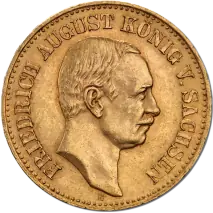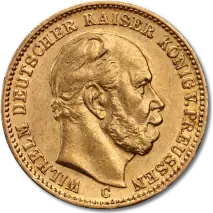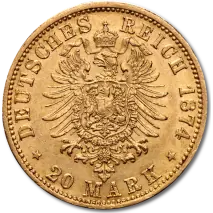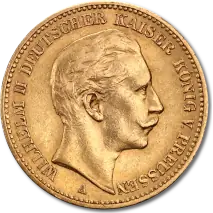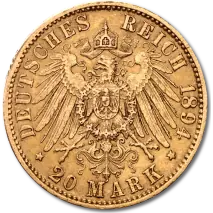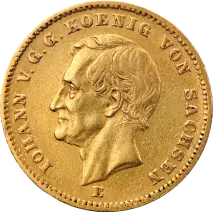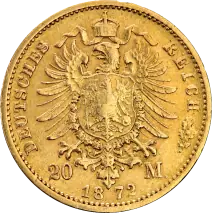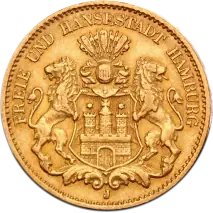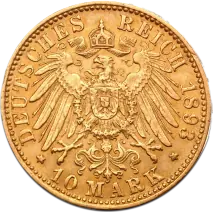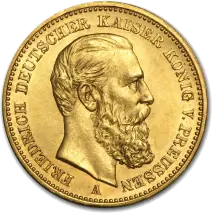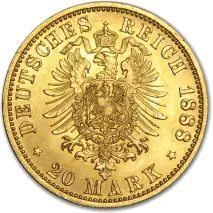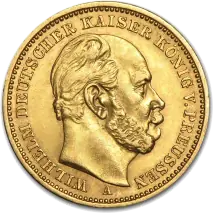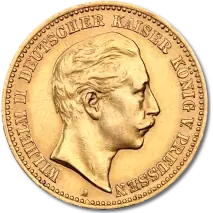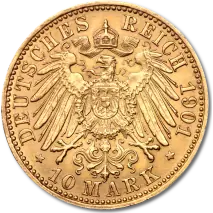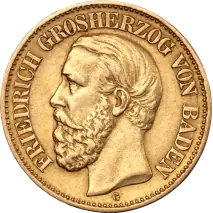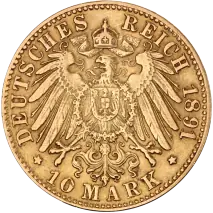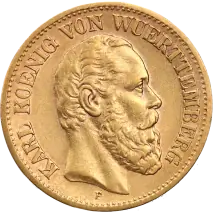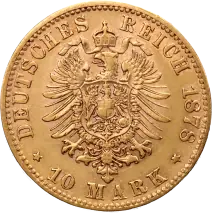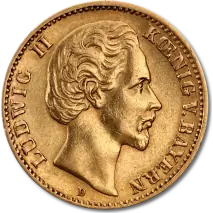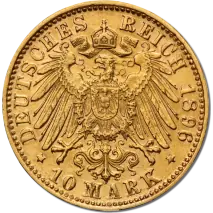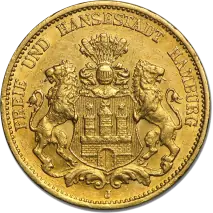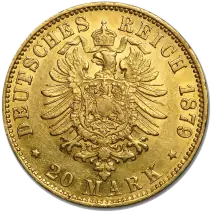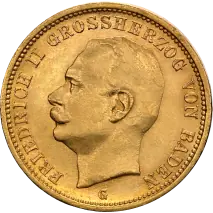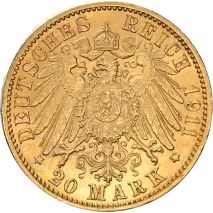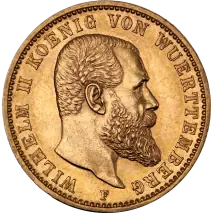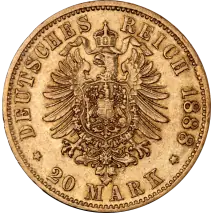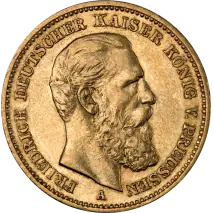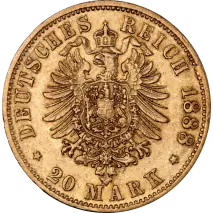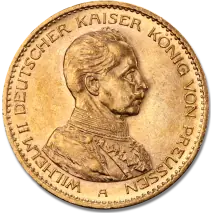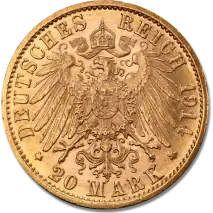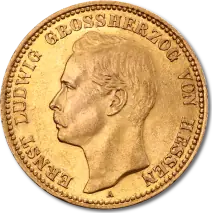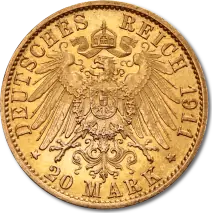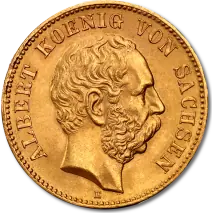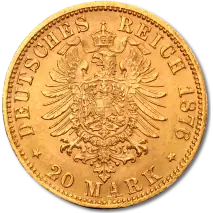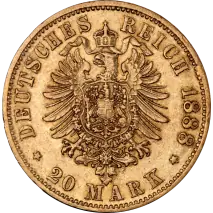German Empire Gold Mark Coins
Buy German Empire Gold Mark gold coins in the UK
Invest in German Empire Gold Mark coins with StoneXBullion, the UK and Europe’s trusted platform for buying investment-grade bullion coins and bars. Since 2006, we’ve helped more than 100,000 investors buy and sell gold securely.
All our Gold Mark coins are sourced from trusted suppliers, authenticated, and shipped with fully insured delivery on all orders across the UK and Europe.
What are German Empire Gold Mark coins?
German Empire Gold Mark coins were minted between 1871 and 1918, following the unification of Germany under Emperor Wilhelm I. Each state within the empire issued its own coins, creating a diverse and highly collectible series.
Key features of Gold Mark coins:
- High purity: Struck in .900 fine gold (90%) as per the Latin Monetary Union standard
- Two main denominations: 10 Mark and 20 Mark
- Issued by multiple German states: Including Prussia, Bavaria, Saxony, Hamburg, Baden, and Württemberg
- Obverse designs: Portraits of regional kings, grand dukes, or emperors
- Reverse design: Imperial eagle and denomination
- Historical significance: Minted during the reigns of Kaiser Wilhelm I, Wilhelm II, Friedrich III, Ludwig II of Bavaria, and other ruling houses.
Why invest in German Empire Gold Mark coins?
German Gold Marks combine gold value with historical significance, making them highly sought after by both precious metal investors and numismatists:
- Historic appeal: Each coin represents a period of European growth and imperial heritage
- Strong liquidity: Widely recognised internationally and easy to resell
- Affordable entry point: Lower premiums compared to many modern numismatic coins
- Diverse designs: Multiple rulers, states, and mints create an opportunity to build a themed collection
- VAT-free in the UK: Gold Mark coins are exempt from VAT in the UK.
Types of German Empire Gold Mark coins
Our collection includes a wide range of 10 Mark and 20 Mark coins issued by various imperial states and cities.
20 Mark Gold Coins (1871-1918)
Popular options include:
- 20 Mark - Emperor Wilhelm II (Prussia)
- 20 Mark - Emperor Wilhelm I (Prussia)
- 20 Mark - Grand Duke Friedrich III (Baden)
- 20 Mark - King Wilhelm II (Württemberg)
- 20 Mark - King Friedrich August III (Saxony)
- 20 Mark - King Albert (Saxony)
- 20 Mark - King Otto (Bavaria)
10 Mark Gold Coins (1871-1913)
Popular options include:
- 10 Mark - Free Hanseatic City of Hamburg
- 10 Mark - Emperor Friedrich III (Prussia)
- 10 Mark - Emperor Wilhelm I & II (Prussia)
- 10 Mark - Grand Duke Friedrich I (Baden)
- 10 Mark - King Karl (Württemberg)
- 10 Mark - King Ludwig II (Bavaria)
- 10 Mark - King Otto (Bavaria)
How to buy German Empire Gold Marks coins in the UK
Buying historic Gold Mark coins with StoneXBullion is simple and secure:
- Browse our collection: Explore 10 Mark and 20 Mark coins from various German states and mints
- Check live pricing: Updated every 60 seconds based on the London Bullion Market Association (LBMA)
- Pay securely: Complete checkout via bank transfer or credit card
- Receive insured delivery: All coins are fully insured and discreetly packaged for UK and European delivery.
German Empire Gold Marks: FAQs
What is the purity of German Gold Mark coins?
All 10 Mark and 20 Mark coins are minted in .900 (90%) fine gold.
Are German Gold Marks VAT-free in the UK?
Yes, German Gold Marks are classed as investment-grade gold and VAT-free in the UK.
Are Gold Mark coins easy to resell?
Yes, Gold Marks are widely recognised across Europe and valued for their designs and historical significance, making them highly liquid.
Which German states minted Gold Mark coins?
Gold Marks were minted in Prussia, Saxony, Bavaria, Württemberg, Baden, and Hamburg.
What’s the difference between 10 Mark and 20 Mark coins?
20 Mark coins contain roughly twice the amount of gold as 10 Mark coins.
Invest in German Empire Gold Mark coins today
Buy authentic German Empire Gold Mark coins online with StoneXBullion, trusted by over 100,000 investors across the UK and Europe. Enjoy live pricing, secure checkout, and fully insured delivery direct to your door.
Browse all German Empire Gold Coins and start your Gold Mark collection today.
